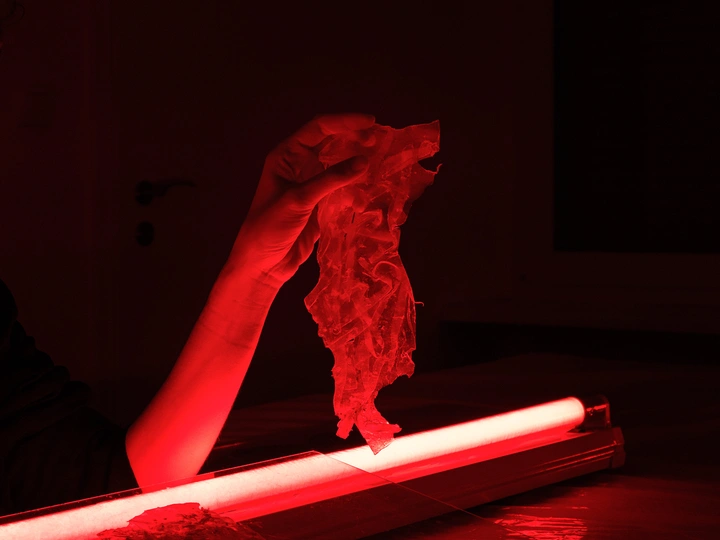Tomatl Structure_Colonial Landscape Transformation

Paula Vidal, an academic trained architect, is an artist who works with space as a canvas. Her large-format installations are on-site interventions that seek to launch questions that visitors must answer through their bodies, thus questioning their perception of physical and mental territories.
Paula Vidal (1986 Spanish/Chilean) studied Architecture at U.S.P.CEU and Art History at U.A.M and is recently started a PhD on the PEP Program at TU Berlin.
Her work has been exhibited at NY, Assen, Madrid, S.Chile, Venice, Berlin and Salzburg. As an architect she has worked in Chile, Sierra Leone, Spain and Germany, where she currently resides.
The topics that concern Paula Vidal are the political approach of landscape and architecture, as well as the perception of Space through the experimentation of the body, inquiring about the hierarchies we make through human values projections such as ecology, the productive landscape, the waste landscape in the physical space.
The pneumatic structures are one of the artistic techniques Paula uses to generate changing spaces, sensitive to the presence of the spectator. Through the visitor's activation, the art piece will generate a new reality that is not only spatial, but also emotional, because architecture has that power: the power to modify people’s mood and state of mind.
The tomato, a symbol of colonial appropriation, has modified the current landscape. Originally from the Andean lowlands, it was imported to Europe in the 16th century with the first returning ships. Since its introduction, it has undergone genetic metamorphosis to optimize its trade, altering its shape, color, and flavor, and changing cultivation methods from orchards to plastic-covered greenhouses to quadruple its production.
Greenhouses have their roots in colonial structures, created to keep exotic plants alive as trophies from conquered territories. Currently, they are used in intensive agriculture and the exploitation of off-season products. An invasion whose urbanism and landscaping impact on a metropolitan scale.
What is Tomatl Structure? An experiment that transforms the agricultural architecture of Almería's 360 km2 plastic-covered sea. An area larger than the German city of Munich and the world's largest concentration of agriculture catering to the capricious consumption of products like tomatoes in Europe.
In the context of the Anthropocene, our impact through these agricultural constructions causes not only deforestation, biodiversity loss, and water pollution but also a significant amount of inorganic waste. For every ton of tomatoes, an eighth of inorganic waste is generated from the structures that house them.
Tomatl Structure: Transforming the Landscape of Colonial Appropriation proposes an innovative approach, treating greenhouses as living organisms, seeking a sustainable life cycle through inflatable bioplastics made from tomato waste, eliminating waste, and generating circularity in their constructions.
Evolving from the OSS (Out of Season Shelter) project, exhibited three times in 2022 in art spaces in Berlin, including GlogauAIR ArtSpace, Monopol, and Vorfluter Projektraum, it questions the landscape shaped by uncontrolled consumption and addresses the colonial heritage of greenhouses.